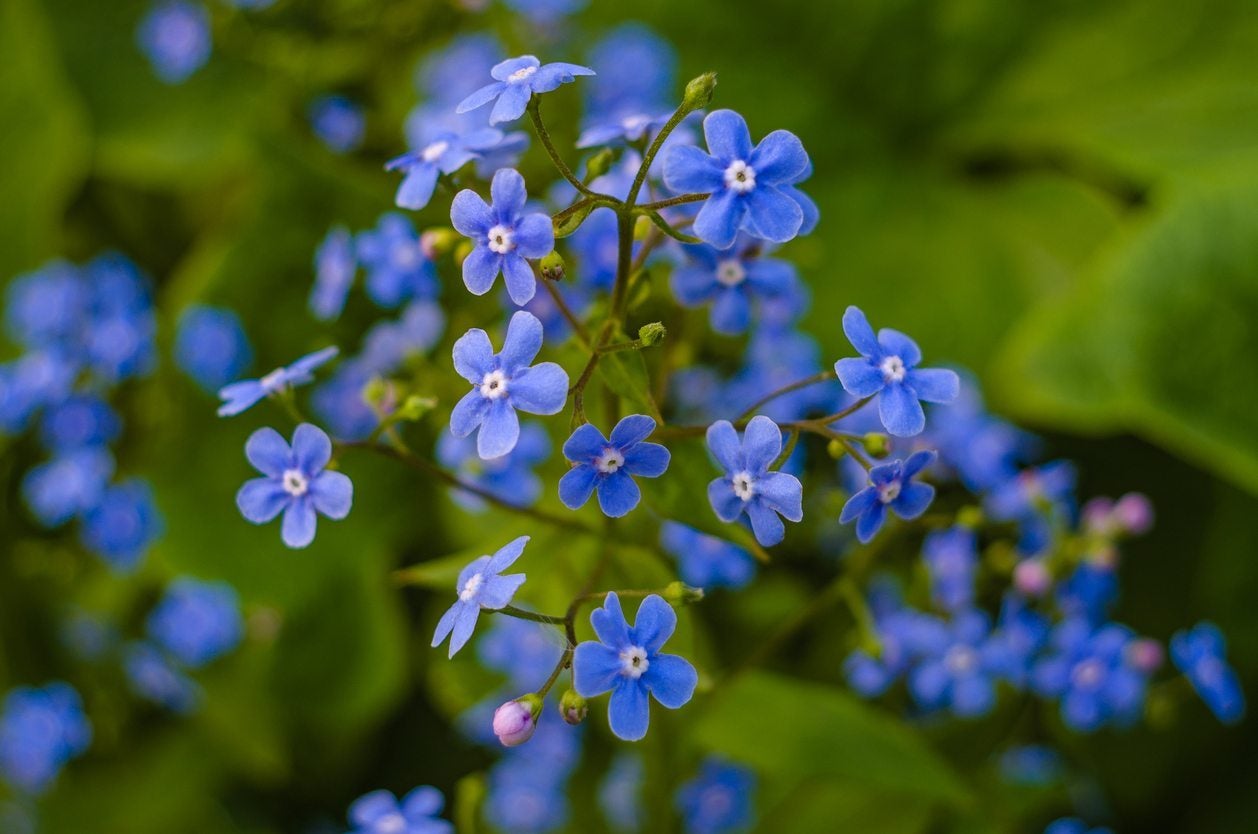Forget-Me-Not Troubles: Problems With Forget-Me-Nots In Gardens


Growing forget-me-nots can be a walk in the park if you know what signs of danger to be on the lookout for. Even though these plants have few problems, there’s always a risk of fungal disease or insect pests, so read up on the most common issues of forget-me-nots you’ll see in the garden.
Whether you’re having forget-me-not troubles or are simply preparing for the worst, this article will help you find the results you want.
Common Forget-Me-Not Problems
A robust stand of forget-me-nots is a truly remarkable sight, but that picture perfect image doesn’t simply happen by accident. Awe-inspiring forget-me-nots are the product of a grower who is intimately familiar with the common problems with forget-me-nots, from fungal disease to pest insects.
Although forget-me-nots are generally pretty tough once established in the landscape, that doesn’t mean that they’ll never have a problem. Luckily, most pests and diseases of forget-me-nots are pretty simple to control.
Keep an eye out in the garden for these common forget-me-not pests and diseases for the best success with forget-me-nots:
Aphids. The sooner you catch these small, soft-bodied sap-suckers, the easier they are to get rid of, so inspect your plants regularly. They look a bit like tiny potatoes and don’t move once they start feeding on the undersides of plant leaves.
A regular spray of water or manually wiping them from plants can control aphids adequately. Watch for ants that might be farming these aphids, since they can reestablish a colony quickly. Strategically placed ant baits can help control the tiny farmers.
Sign up for the Gardening Know How newsletter today and receive a free copy of our e-book "How to Grow Delicious Tomatoes".
Potato flea beetles. These seed-like black beetles feed on the undersides of plant leaves, causing significant discoloration and death to foliage, but aren’t considered serious pests of forget-me-nots.
You can avoid inviting flea beetle pests into your stands by covering young plants with row covers until they’re established.
Slugs and snails. Of all the garden pests out there, slugs and snails have a special kind of notoriety about them. They can seem unstoppable, but they’re actually quite easy to arrest if you plan well.
Go out at night and check your forget-me-not stand to ensure that the damage is coming from either slugs or snails. With a positive identification made, you can start hand-picking them if the stand is small, being sure to dunk the pests in a bucket full of soapy water as you find them.
Longer-term control can be achieved by planting aluminum pie pans around your plants and filling them with cheap beer. Slugs and snails don’t need a microbrew; they’re happy to jump in and spend their last nights soaking in the cheap stuff.
Make sure to clean traps in the morning and reset until you’ve gone several nights without any new slugs or snails in your trap.
Crown rot. If your plants are starting to wilt and die and you notice thin cobweb-like threads on their bases, you’re probably dealing with Sclerotium delphinii.
This serious fungal pathogen will destroy any forget-me-not it comes into contact with, so dig and destroy all affected plants and those that are immediate neighbors if you hope to control the spread.
Clean your tools carefully to ensure you don’t spread any spores that lead to crown rot. Infested soil should be destroyed when possible, or covered in clear plastic until the following spring to ensure the spores are adequately halted.
Other fungal diseases. Powdery mildew, leaf spots, rust and downy mildew are also common, but simple, problems of forget-me-nots. For these pathogens, make sure the area has plenty of good air circulation, remove all dead plant matter and treat with a fungicide like mancozeb or thiophanate-methyl as soon as signs appear.

Kristi Waterworth was a regular contributor to Gardening Know How for many years, answering countless queries on plant pests and diseases.